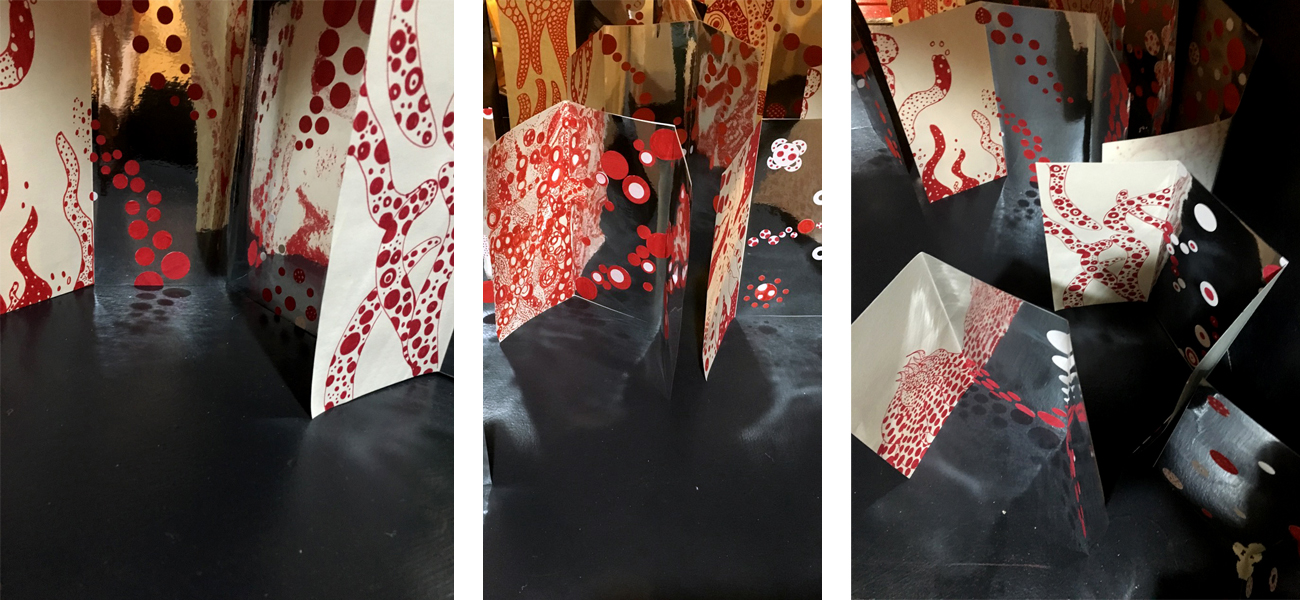


Located in the southern part of Benin-Republic, near the port city of Cotonou, is Ganvie the largest floating village in Africa. Here Are Three Surprising Facts You Might Not Know About It | Artnet News Yayoi Kusama's Playful 'Obliteration Room' Has Been a Hit for 20 Years. #art #artist #artists #artinstallation #immersive #immersiveart #immersiveexperience #immersiveenvironment #experience #experiencedesign #experiences #experienceeconomy #experiential #contemporartart #artandculture #artsandentertainment #visualarts These time-based kaleidoscopic conversions are the hallmark of Yayoi Kusama’s Obliteration Room, one of the Japanese artist’s most famous installations-and one of her most directly participatory since the earliest days of her career. Now imagine that space transforming, one colorful dot by brilliantly colorful dot, over the course of days and weeks into a kind of living Pointillist environment so reverberatingly colorful that the eye bounces from one wall to the next.
#OBLITERATION ROOM BY YAYOI KUSAMA LICENSE#
This is a part of the Wikipedia article used under the Creative Commons Attribution-Sharealike 3.0 Unported License (CC-BY-SA).Picture this: a pristinely, even glaringly white room, filled with white chairs, white tables, white cabinets, and even white light fixtures. Her childhood was greatly influenced by the events of the war, and she claims that it was during this period that she began to value notions of personal and creative freedom. Discussing her time in the factory, she says that she spent her adolescence "in closed darkness" although she could always hear the air-raid alerts going off and see American B-29s flying overhead in broad daylight. When Kusama was 13, she was sent to work in a military factory where she was tasked with sewing and fabricating parachutes for the Japanese army, then embroiled in World War II. She was reportedly fascinated by the smooth white stones covering the bed of the river near her family home, which she cites as another of the seminal influences behind her lasting fixation on dots. These hallucinations also included flowers that spoke to Kusama, and patterns in fabric that she stared at coming to life, multiplying, and engulfing or expunging her, a process which she has carried into her artistic career and which she calls "self-obliteration". When she was ten years old, she began to experience vivid hallucinations which she has described as "flashes of light, auras, or dense fields of dots". I didn’t want to have sex with anyone for years The sexual obsession and fear of sex sit side by side in me." When I was a child, my father had lovers and I experienced seeing him. The artist says that her mother would often send her to spy on her father's extramarital affairs, which instilled within her a lifelong contempt for sexuality, particularly the male body and the phallus: "I don’t like sex. Her mother was apparently physically abusive, and Kusama remembers her father as "the type who would play around, who would womanize a lot". Since the 1970s, Kusama has continued to create art, most notably installations in various museums around the world.īorn in 1929 in Matsumoto, Nagano into an affluent family of merchants who owned a plant nursery and seed farm, Kusama started creating art at an early age and began writing poetry at age 18.
#OBLITERATION ROOM BY YAYOI KUSAMA SERIES#
Embracing the rise of the hippie counterculture of the late 1960s, she came to public attention when she organized a series of happenings in which naked participants were painted with brightly colored polka dots. She moved to New York City in 1958 and was a part of the New York avant-garde scene throughout the 1960s, especially in the pop-art movement. Kusama was inspired, however, by American Abstract Impressionism. Raised in Matsumoto, Kusama trained at the Kyoto School of Arts and Crafts in a traditional Japanese painting style called nihonga. She has been acknowledged as one of the most important living artists to come out of Japan.

Her work is based in conceptual art and shows some attributes of feminism, minimalism, surrealism, Art Brut, pop art, and abstract expressionism, and is infused with autobiographical, psychological, and sexual content. Yayoi Kusama (草間 彌生, Kusama Yayoi, born March 22, 1929) is a Japanese contemporary artist who works primarily in sculpture and installation, but is also active in painting, performance, film, fashion, poetry, fiction, and other arts.


 0 kommentar(er)
0 kommentar(er)
